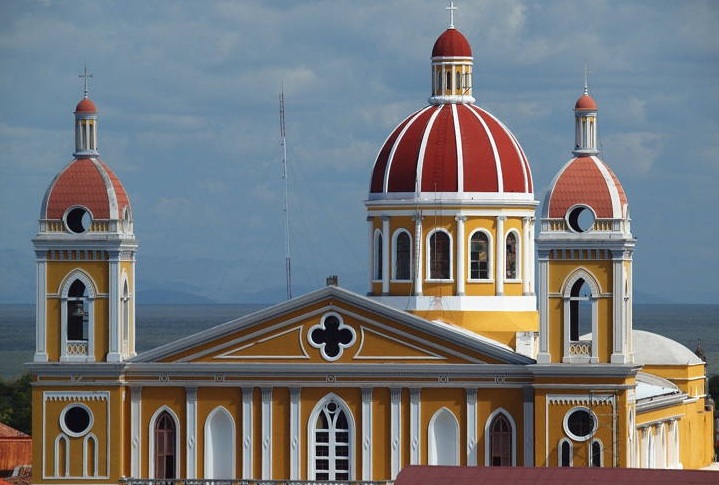La República Dominicana tiene una de las mayores reservas del mundo de ámbar, la savia petrificada de los árboles que crecieron aquí hace 50 millones de años. La mayor pieza de ámbar hallada en el país pesó 9,5 kg.

Granada is a city of Nicaragua, with colonial attributes par excellence, was founded by Francisco Hernández de Córdoba in 1524, has its ancestral origins in the settlement of the indigenous community of Xalteva and currently consists of four municipalities. It has paradisiacal islets, 365 in total, one for each day of the year; the Mombacho volcano; Lake Cocibolca or Lake Nicaragua; and dancing expressions such as Los Diablos de Nandaime. Nature and history are the main axes that bring together the many attractions of the small but very interesting department of Granada, where there is an extinct volcano, extensive coasts of Lake Cocibolca or Lake Nicaragua, archipelagos and the oldest city in the country, which retains its large historic colonial center.
The Mombacho Volcano has an exotic forest nearby, but in addition the vacationer can enjoy the extensive shores of the great lake, where you can take a bath or do water sports and activities. There lies the interesting and very accessible archipelago of Las Isletas, made up of more than 300 small islands. Inside the lake is the enigmatic Zapatera Archipelago, which holds part of its forests and a little-studied pre-Columbian archeological treasure. Other interesting points are its country estates that offer rural tourism activities, as well as the city of Nandaime and the small towns of Diriá and Diriomo, which both form part of the so-called Witches' Villages or White Villages together with several of their neighbours in Masaya.
The Laguna de ApoyoNarural Reserve takes over part of the department. Granada is home to several iconic Spanish colonial sites and survived pirate invasions. The city's main square, Parque Central, is dominated by the colourful neo-classical façade of Granada's Cathedral, which originally dates from 1583. Nearby is the Convento San Francisco Cultural Center, famous for its exhibitions of pre-Columbian statues. Thousands of tourists travel to this destination every year attracted by its warm climate all year round, the architecture of the colonial era and the fresh water of the lake. The department of Granada is the one that receives most tourism in the whole country and one of the biggest tourist attractions
You may also like:

La República Dominicana tiene una de las mayores reservas del mundo de ámbar, la savia petrificada de los árboles que crecieron aquí hace 50 millones de años. La mayor pieza de ámbar hallada en el país pesó 9,5 kg.